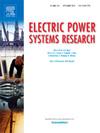结合时空特征和稀疏注意力的Pt-Transformer神经网络短期多步风电预测模型
IF 4.2
3区 工程技术
Q2 ENGINEERING, ELECTRICAL & ELECTRONIC
引用次数: 0
摘要
风电预测的准确性和稳定性对电网调度至关重要。然而,精确的风电预测面临着三个主要挑战:有效降低数据噪声,表征复杂的时空特征,选择合适的预测模型。为了解决这些问题,本文提出了一种新的风电预测模型——过程时序变压器(Pt-Transformer)。首先,在保持数据复杂度的前提下,采用指数加权移动平均(EWMA)方法滤除原始风特征的噪声;其次,将季节趋势分解(STD)模型与时间自编码器(TAE)相结合,有效提取复杂的时空特征;在此基础上,引入了一种结合Transformer架构的稀疏注意机制,有效地提取高维潜在空间表示。最后,利用中国中部一个风电场集群和一个风电场的数据进行了两个案例研究,分别使用Transformer、probi -Transformer和Pt-Transformer三种模型进行预测。结果表明,Pt-Transformer模型在预测精度和稳定性方面优于其他两种模型,反映了其在短期多步风力发电预测中的优异性能。本文章由计算机程序翻译,如有差异,请以英文原文为准。
Short-term multi-step wind power prediction model based on Pt-Transformer neural network integrating spatio-temporal feature and sparse attention
The accuracy and stability of wind power prediction are crucial for grid dispatching. However, precise wind power prediction faces three major challenges: effective mitigating data noise, representing complex spatio-temporal features, and selecting an appropriate prediction model. To address these challenges, this paper proposes a new wind power prediction model called process temporal transformer (Pt-Transformer). Firstly, an exponential weighted moving average (EWMA) method is employed to filter the noise of original wind characteristics while maintaining data complexity. Secondly, a seasonal trend decomposition (STD) model combined with a temporal autoencoder (TAE) is implemented to efficiently extract complex spatio-temporal characteristics. Furthermore, a sparse attention mechanism combined with the Transformer architecture is introduced to effectively extract high-dimensional latent space representations. Finally, two case studies are conducted using data from a cluster of wind farms and a single wind farm in central China, and three models, namely Transformer, Prob-Transformer, and Pt-Transformer, are used for prediction. The results show that the Pt-Transformer model outperforms the other two models in prediction accuracy and stability, reflecting its excellent performance in short-term multi-step wind power generation prediction.
求助全文
通过发布文献求助,成功后即可免费获取论文全文。
去求助
来源期刊

Electric Power Systems Research
工程技术-工程:电子与电气
CiteScore
7.50
自引率
17.90%
发文量
963
审稿时长
3.8 months
期刊介绍:
Electric Power Systems Research is an international medium for the publication of original papers concerned with the generation, transmission, distribution and utilization of electrical energy. The journal aims at presenting important results of work in this field, whether in the form of applied research, development of new procedures or components, orginal application of existing knowledge or new designapproaches. The scope of Electric Power Systems Research is broad, encompassing all aspects of electric power systems. The following list of topics is not intended to be exhaustive, but rather to indicate topics that fall within the journal purview.
• Generation techniques ranging from advances in conventional electromechanical methods, through nuclear power generation, to renewable energy generation.
• Transmission, spanning the broad area from UHV (ac and dc) to network operation and protection, line routing and design.
• Substation work: equipment design, protection and control systems.
• Distribution techniques, equipment development, and smart grids.
• The utilization area from energy efficiency to distributed load levelling techniques.
• Systems studies including control techniques, planning, optimization methods, stability, security assessment and insulation coordination.
 求助内容:
求助内容: 应助结果提醒方式:
应助结果提醒方式:


